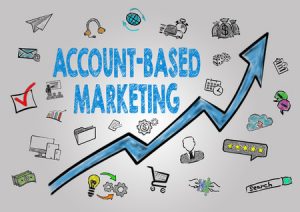
Account-Based Marketing (ABM) is a strategy companies use to build relationships with specific prospects or customers. Unlike traditional B2B marketing that casts a wide net to capture as many leads as possible, ABM focuses sales and marketing resources on a clearly defined group of target accounts. Often, these accounts are high-yield and represent the best fit for the organization and its products and services.
While more expensive than other approaches due to its individualized nature, 71 percent of B2B organizations are either using ABM, interested in adopting the strategy or are testing it. The reason for this attention is more than 95 percent of B2B marketers report ABM drives a successful ROI, especially for companies that follow these guidelines.
ABM Guidelines to Increase ROI

- Define and understand your target market. Use known insights and industry research to understand where your products and services are best suited. Build a database of potential prospects and begin your own account-specific research. It’s vital to understand the pain points of your potential customers and how your company can solve them. Their needs determine your relevance. Rank accounts by their potential to ensure time and money are used in the right places.
- Acquire tools and tactics to measure account data. A significant benefit of ABM is the ability to gather data from already narrowed fields. By casting a single line, the ability to draw insight about successes and failures vastly improves. It’s important to seize this advantage and utilize data collection programs and techniques to further your marketplace understanding. Use this data to adapt and advance your brand’s messaging and discover the best distribution channels. This data also helps better understand the needs and challenges of your target accounts.
- Scale personalization and accompanying research. Once your target accounts are established, catering to them requires personalization. Start by defining the level of personalization for each account in your marketing messaging. Determine this by the “hotness” of the prospect account, by time and resources required and the growth, revenue or profit potential, or a combination of these. A high level of personalization focuses on a single account and delves deep into research. Personalization also develops messaging, data and relevance for just that account. A medium personalization level might simply be industry-specific, with cursory market research done on a single prospect. Lower level personalization includes persona-based programmatic messaging or even complete automation.
- Align sales and marketing efforts. Sixty percent of companies say they are “somewhat” or “tightly” aligned with sales. Compared to 83 percent alignment within firms that employ ABM strategies, the difference is clear. The bottom line is marketing and sales need to take a collaborative and unified approach to plan, develop and deliver marketing content.
- Develop relevant content to the right people at the right time. AMB requires a deep understanding of buyer personas to create the right content, delivered through in the right medium at exactly the right time. Content should address pain points, provide value and lead the prospect to the next step in the sales funnel. What’s different in ABM is the sales team delivers that content to the prospect. Therefore, it is essential to be sure the sales team is representing the brand in the best possible way.
Go Fishing

Some say traditional B2B marketing is fishing with nets and ABM is fishing with spears. When organizations focus on landing the biggest deals, the opportunity for growth and long-term revenue skyrockets. Because of its success, ABM is gathering more traction every year. Since the ROI is well-documented, the question is how will you integrate ABM into your current strategy? It’s never too late to start.
